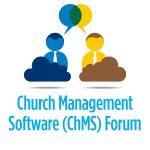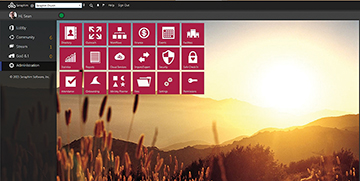By Sam Batterman
 Changing a church management system (ChMS) is a big deal for a church of any size. Make sure you understand why you want your church to undergo this shift.
Changing a church management system (ChMS) is a big deal for a church of any size. Make sure you understand why you want your church to undergo this shift.
There are dozens of valid reasons for changing ChMS, but understand that political capital will be expended in making this change.
“We hate our system”
Now, here’s a reason that’s not valid. This statement is probably more of an indicator that the church has outgrown its software — or that the software was a poor match for the church in the first place, or that the information isn’t sufficient to achieve tasks in an efficient manner.
Watch out for this phrase, because you could actually replace an old system with a new system … and still hear this lament.
 What a new system means
What a new system means
Church management systems are three things: data, processes and features. Sometimes, we mistakenly think of features as processes; rather, a feature is how something is done in a process. All church management systems track attendance in some way, but how that process is done can vary greatly.
When you’re considering a new system, it’s vitally important that you look at your internal processes in a new way. The new system is modeled in a different way than the old one. If you buy a new system and stick with the old ways, you might actually be hurting yourselves by not taking full advantage of the processes the new software were designed to “set free.”
List your features, build your stakeholders
Don’t go shopping without a list. It’s good advice for grocery shopping and even better advice for looking at ChMS.
Nearly every vendor will handle the basics; just make sure you have them down in the priority order of your church. Here’s a quick list of the ChMS basics you need:
Membership — track items of importance for any person or organization
Family units — flexible modeling of any family unit
Grouping — build and maintain collections of people (classes, bands, skills, etc.)
Events — create and maintain events for services, attendance and safe check-in
Attendance — track detailed or headcount attendance per event
Safe check-in — match up who dropped off children and who can pick them up
Reporting — analytics and reporting of nearly anything
Donations — track donations and pledges and generate tax statements.
After the basics, things get a bit more nebulous. This is where you see the innovation, character and direction of different vendors.
Evaluate ChMS using your own church’s data

The vendor should be able to show you what your church will look like with the new software before you plunk down any cash. This is a critical point. Every system models family units, attendance and groups a little differently. Understanding how your existing data fits into their model is vital to success.
For example, if your church is large (more than 5,000 records), you need to understand how fast the processes operate on data of that scale. If your vendor won’t entertain this idea, run away.
During the evaluation, check out the usability of the software — not just how easy it is to perform common tasks, but how difficult is it to do the “impossible” tasks. How far can you stretch it before you have to resort to exporting files to other tools to accomplish your task?
Also consider migration — make sure you understand what’s “migratable” and what can’t be migrated. (And, don’t forget to ask about cost.)
Service, service, service
Can you call and get someone on the phone? Can you email? How quickly does the vendor respond? Does it even know who you are? Is it reaching out to you proactively?
The most common complaint about ChMS vendors is that the service stinks. Understand what you’re buying in to: a roadmap and a long-term relationship. So, make sure you ask about a vendor’s development roadmap. Can you impact that roadmap with your ideas? Will the vendor listen to you? How fast is the vendor releasing?
Finally, talk to the vendor’s leadership. Who are they? Do they understand churches? Is this an obsession for them, or just a hobby?
Your infrastructure
Are you thinking about buying a cloud-based system with a lousy wireless internet service? Make sure you invest in the infrastructure to make the purchase successful.
Are you buying new software, but using 10-year-old check-in equipment? Think about the impedance of the hardware and software you’re combining.
Making the right ChMS decision can help you care for your congregants like never before, schedule volunteers with ease, track new visitors, and grow the church. It’s an important choice, so make the best one you can.
Sam Batterman is president and CTO of Seraphim Software in Collegeville, PA. After years of working for companies including Merck and Microsoft, Batterman and his team now enable churches with high-tech tools designed especially for them. Come see Seraphim at WFX 2015 in Nashville.


